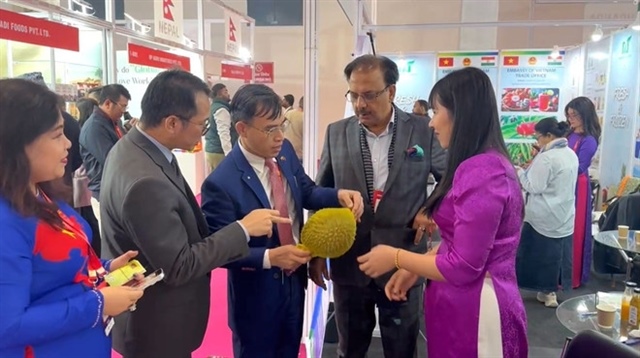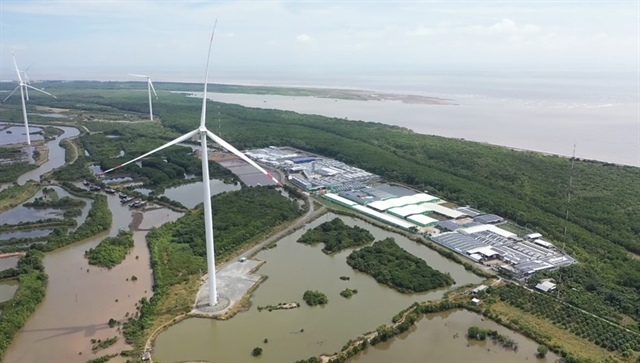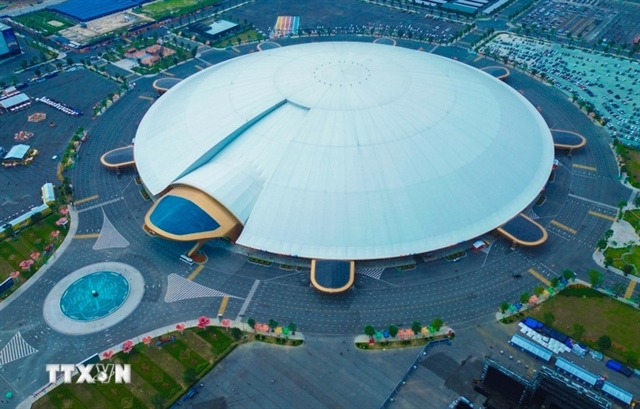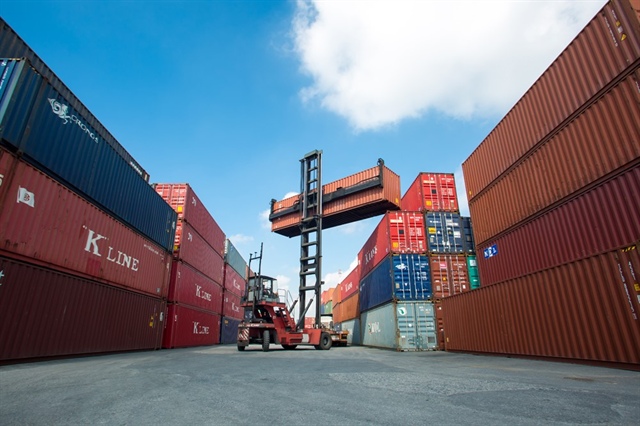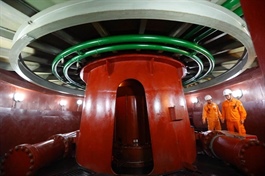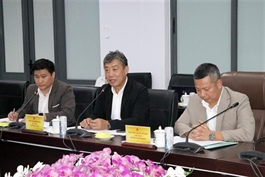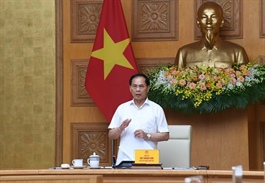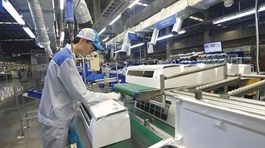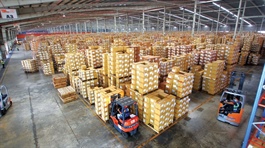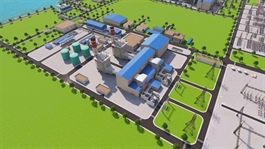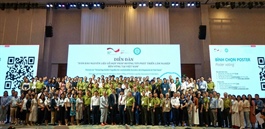Central region leans into new role as clean energy hub
Central region leans into new role as clean energy hub
Quảng Trị and Gia Lai Provinces are emerging as clean energy hubs in Việt Nam's Central region.
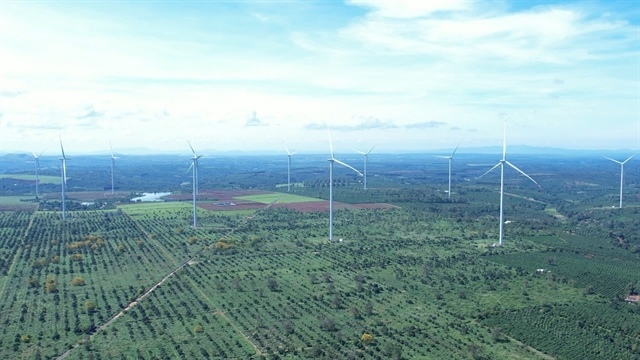
Construction of the LIG-Quảng Trị Solar Power Farm is nearing completion. VNA/VNS Photo |
The newly enlarged provinces of Quảng Trị and Gia Lai are emerging as clean energy hubs in Việt Nam's central region.
The new province of Quảng Trị, created through the merger of Quảng Trị and Quảng Bình, is gradually establishing itself as a key clean energy hub.
Energy plants in Quảng Trị now are expected to have a total capacity of over 12,000MW, with numerous projects either already in operation or in the process of implementation.
According to the provincial Department of Industry and Trade, the total power capacity outlined in the local Power Plan VIII, along with its adjustments for 2030, is 12,960MW, while the 2031–2035 period is projected to add 3,870MW.
The total electricity capacity in the area is nearly 1,460MW as of last month. This includes 21 wind power projects with a capacity of 994MW, 11 hydropower projects with 182MW, and four ground-mounted solar power farms with 159MW (equivalent to 199 MWp). Additionally, there are more than 1,200 rooftop solar power systems with a combined capacity of 127MW.
A particular focus has been placed on wind power. Thus far, 11 wind projects have been granted investment policies, with a total capacity of 424MW.
Of these, three projects (108MW) are expected to be operational by the end of this year, while the remaining projects will be launched in the 2026–2027 period. These projects are currently in the process of selecting investors for power source projects in the province, which have been added to both the original and adjusted Power Plan VIII.
"We are building a true clean energy centre in the central region, where renewable energy is not only a pillar industry but also a driving force for a low-emission green economy in the future," said Hồ Xuân Hòe, director of Quảng Trị's Department of Industry and Trade (DIT).
In addition, the province is home to several large-scale liquefied natural gas (LNG) and thermal power projects, which are expected to strengthen energy security and attract industrial investment.
These include the Quảng Trạch Thermal Power Plant 1 (1,403MW, invested by EVN), Hải Lăng LNG Phase 1 (1,500MW, a joint venture between T&T, HEC, KOGAS and KOSPO), Quảng Trạch LNG 2 and 3 (each with a capacity of 1,500MW), and the Quảng Trị Thermal Power Plant (1,320MW), which has been proposed for investment by EVN.

Construction of the LIG-Quảng Trị Solar Power Farm is nearing completion. VNA/VNS Photo |
The new Gia Lai, which has incorporated the neighbouring province of Bình Định, is also rapidly becoming a renewable energy hub in the south central region.
According to the Green Energy Transition Plan to 2030 recently issued by Gia Lai, the province will organise bidding for 52 wind and solar power projects with a total capacity of over 2,000MW in the 2025–2026 period.
These projects are among those that have already been surveyed or planned, or those currently being promoted for investment.
Among them, nearly 10 wind power projects located in the western areas of the province have completed technical documentation and site clearance, and are ready for deployment once investment procedures are finalised.
A massive offshore wind power project with a capacity of 2,000MW and a cost of US$4.6 billion is being proposed, with phase 1 (750MW) expected to be completed before 2030.
The total potential of wind and solar power in the province is estimated at up to 20,000MW (if offshore wind power is included), a direction that the province is looking to add to the national grid in the near future.
This locality clearly identifies clean energy as a strategic economic sector, with an aim to generate electricity as well as pave the way for a green economy, a circular economy and attract investment in supporting industries.
Energy advantages are also the basis for attracting investment in industries using green electricity, including new material production, information technology and decarbonising agricultural processing.
Wind power development also helps form engineering, construction and maintenance supply chains, creating thousands of on-site technical jobs.
Thanks to its vision of clean energy over the past decades, Gia Lai has attracted many investors and large corporations in the green and circular economy.
"The newly enlarged province of Gia Lai has been attracting numerous technology corporations due to its clean energy potential," said Vũ Văn Đông, CEO of FPT Software Quy Nhơn.
Clean energy would be one of the prerequisites for fields like technology, the green economy and the knowledge economy, he said.
Trần Thúc Kham, deputy director of the Department of Industry and Trade of Gia Lai, said: "The province's strategy to 2030 clearly identifies developing renewable energy as a stepping stone to forming a green economy, where clean energy not only generates electricity but also reshapes the structure of production, consumption and urbanisation."
"That is the new path Gia Lai has chosen to create a sustainable, climate-friendly and equitable future for all generations," he added.
Challenges
However, this journey has not been without its challenges. Many wind power projects have encountered difficulties during the investor selection bidding process, especially those involving land use, according to DIT director Hòe of Quảng Trị.
This is due to the current regulations on zoning, with the 1/2000 scale plan not aligning with the reality of energy projects that extend along several routes.
The province has submitted a formal request to the Ministry of Industry and Trade, the Ministry of Agriculture and Environment, the Ministry of Finance and the Government to consider the unique characteristics of energy projects.
They have proposed applying flexible mechanisms to accelerate progress, avoid resource waste and seize investment opportunities.
At the same time, they recommended assigning EVN as the project owner for major projects like the Quảng Trị Thermal Power Plant and Quảng Trạch LNG Plant 3, to leverage shared infrastructure and experience in implementing adjacent projects.
Gia Lai is also facing the same challenge as Quảng Trị, where legal regulations have not kept up with the practical implementation of clean energy projects.
The province has therefore been actively promoting the completion of marine spatial planning, as well as the planning for the transition zone between the plateau and the plain, according to DIT deputy director Kham of Gia Lai.
At the same time, it has recommended that the central Government accelerate amendments to regulations related to the appraisal process and the selection of investors for linear energy projects.
- 10:28 13/09/2025


